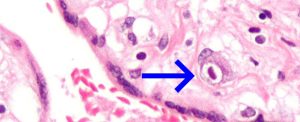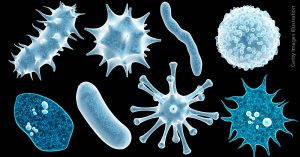The remarkable extension of human life expectancy has propelled the global population from a modest three billion in 1950 to an astounding eight billion by 2022. Yet, the societal quest for prolonging healthspan—the span of existence marked by robust health—remains formidable.
While chronological age (CA) serves as the conventional yardstick for aging, its inability to encapsulate the nuances of biological aging necessitates innovative biomarkers. Scientists are now unearthing biological indices that more precisely decode the aging continuum, according to the reports by news-medical.net.
Among the most compelling approaches to address these challenges are nutritional interventions. These strategies offer the potential to recalibrate molecular circuits implicated in aging and forge bespoke pathways toward sustaining vitality.
Caloric Restriction and Intermittent Fasting: Modulating Longevity
Caloric restriction (CR), a dietary strategy characterized by caloric reduction without compromising nutrition, has emerged as a powerful catalyst for enhancing metabolic equilibrium, curbing obesity risk, and forestalling aging-associated maladies such as neural degeneration and muscular deterioration.

A study encompassing 218 non-obese individuals aged 21–51 revealed that a 25% caloric deficit led to significant reductions in body mass, enhanced lipid profiles, and decelerated biological aging relative to a standard diet cohort. However, the enduring repercussions of CR on healthspan warrant further scrutiny, as per news-medical.net.
Intermittent fasting (IF), typified by alternating phases of fasting and regular consumption, has demonstrated lifespan augmentation in certain organisms, including nematodes and drosophila. In a human study involving 60 individuals aged 48–52, four weeks of alternate-day fasting (ADF) fostered improved body composition, cardiovascular fortification, and attenuated prospects of future cardiac events.
Extended periods of IF have shown potential in diminishing inflammatory markers and optimizing lipid profiles. Notably, a six-week time-restricted feeding (TRF) trial involving 24 older adults highlighted reduced heart rates and hunger levels, though discernible impacts on broader cardiovascular parameters remained elusive.
The Mediterranean Diet: A Time-Tested Blueprint for Longevity
Renowned for its nutrient-rich composition, the Mediterranean diet emphasizes a cornucopia of vegetables, fruits, olive oil, and minimal saturated fats, orchestrating a symphony of antioxidants that promote cellular resilience against aging.

An in vivo investigation demonstrated that rodents consuming virgin olive oil exhibited attenuated levels of deleterious proteins and amplified expression of genes linked to mitochondrial vitality and oxidative defense.
Parallel human studies, such as one encompassing 1,279 individuals aged 65–79, corroborated the diet’s capacity to retard biological aging and bolster cognitive faculties, particularly among women. Subsequent analyses indicated beneficial modulation of gut microbiota, reduced frailty indices and diminished inflammatory biomarkers, according to the reports by news-medical.net.
The Ketogenic Diet: A Double-Edged Sword
The ketogenic diet, defined by high fat and restricted carbohydrate intake, has yielded intriguing findings in preclinical models, showcasing lifespan extension and cognitive enrichment. Nevertheless, its translation to human contexts predominantly revolves around weight management, with outcomes on cardiovascular metrics proving equivocal.

For instance, a comparative analysis of ketogenic and Mediterranean-style diets in participants with prediabetes or type 2 diabetes revealed comparable weight reductions. However, the ketogenic regimen was accompanied by elevated low-density lipoprotein (LDL) cholesterol levels, a well-documented cardiovascular risk factor.
Conversely, another investigation noted cholesterol reductions alongside diminished appetite and gastrointestinal discomfort, raising questions about its suitability for aging populations. Comprehensive evaluations are imperative to ascertain the diet’s safety and efficacy for older demographics.
Paving the Path Forward
While this review adeptly encapsulates the interplay between diverse dietary regimes and aging pathways, limitations persist—namely, inconsistencies in study methodologies, abbreviated timeframes, and the absence of systematic reviews, as per news-medical.net.
Future inquiries must delve into chrononutrition, the exploration of how temporal eating patterns influence metabolic trajectories, and refine metrics linking diet to health outcomes. These endeavors will be instrumental in crafting tailored nutritional frameworks that augment healthspan and attenuate age-associated illnesses.










